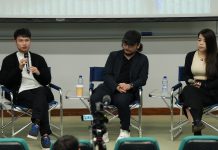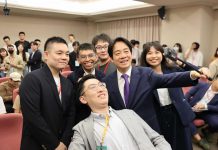Wong also sees Lego Friends as a sales strategy to attract more female consumers. He adds that the accessories in the range are useful and cannot be found in previous lines. One of his friends used the pink and purple bricks in Lego Friends to construct a beautiful big wheel. “It depends on how you use and interpret [the bricks in Lego Friends],” says Wong.
Wong’s view is shared by Ray Kwan Yiu-wai, the founder of Brick Art Design Studio. He says the controversial line entices more girls to play with Lego while boys are willing to make use of the pink and purple bricks to enrich their creations.
Kwan says children find the bricks by themselves to be dull while the licensed products with themed settings arouse their interest. That in turn can spur them on to think about how to use the building blocks in alternative ways.

“They will find out that following the instructions is not enjoyable …then [they] will throw away the instruction booklet and create something more entertaining,” Wong says.
Educational psychologist Helen Ku-Yu Siu-yin, the Secretary for the Division of Educational Psychology of The Hong Kong Psychological Society ,says any problems with gender-stereotyped or themed sets are not so much in the toys themselves but in how they are used.
She encourages parents to look at whether they are choosing too many gender-specific toys for their children overall, and to resist the urge to say “No!” when children use their imagination when playing with the bricks.
Ku-Yu says if children are only encouraged to follow the Lego instructions, their imagination will be inhibited and the activity will not help to foster original thinking and creativity.
“That would mean it [Lego toys] only trains a technician, but not an engineer,” Ku-Yu says.
Edited by Agnes Ng







































